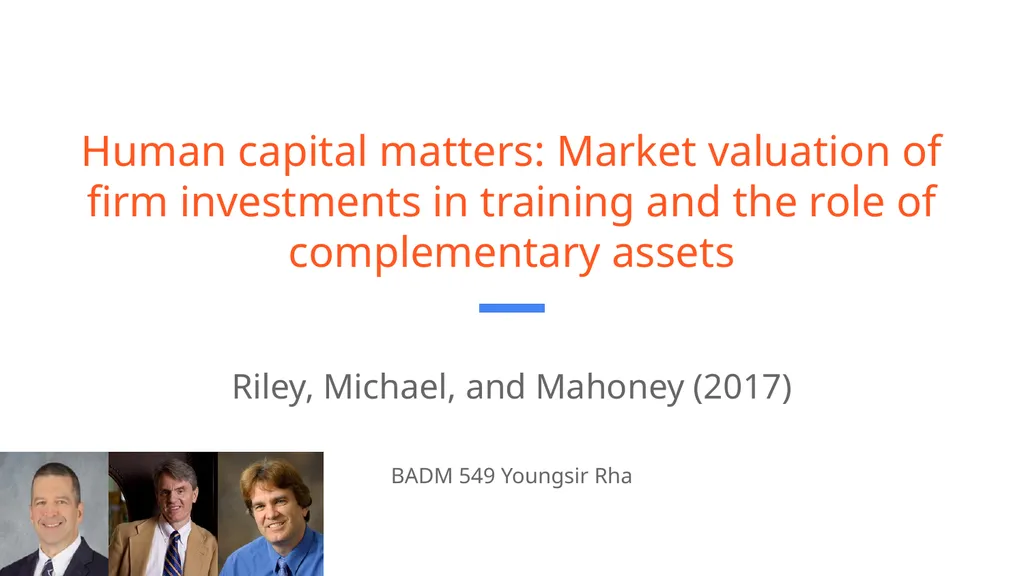Human capital matters: Market valuation of firm
Author : debby-jeon | Published Date : 2025-11-01
Description: Human capital matters Market valuation of firm investments in training and the role of complementary assets Riley Michael and Mahoney 2017 BADM 549 Youngsir Rha Summary Research questions Q1 Can investments in general training be
Presentation Embed Code
Download Presentation
Download
Presentation The PPT/PDF document
"Human capital matters: Market valuation of firm" is the property of its rightful owner.
Permission is granted to download and print the materials on this website for personal, non-commercial use only,
and to display it on your personal computer provided you do not modify the materials and that you retain all
copyright notices contained in the materials. By downloading content from our website, you accept the terms of
this agreement.
Transcript:Human capital matters: Market valuation of firm:
Human capital matters: Market valuation of firm investments in training and the role of complementary assets Riley, Michael, and Mahoney (2017) BADM 549 Youngsir Rha Summary Research questions Q1: Can investments in general training be beneficial for firms financially? Q2: What (firm-level) factors influence the variance of the returns? Methodology Q1: Event study. An “event” is the release of information that firms were awarded with “training top125”. Analyzed their abnormal stock market returns. Q2: Regression analyses to test hypotheses regarding complementary relationships Results Signal of effective investments in human capital training leads to positive stock price reaction Human capital investments are more impactful when there are complementary investments in R&D, physical capital, and advertising investments Human capital matters! Literature Review Resource-based View Resources that are valuable, inimitable, nonsubstitutable, and organizationally embedded (VRIO) can result in a firm’s superior financial performance. Investments in firm-specific human capital are potential sources of sustainable competitive advantage because they are intangible, tacit, and inimitable. General Training vs Firm-specific Training Traditional views General Training (GT) provides skills that are also useful in other firms (competitors). With GT, employees' employability increases because other firms can also capture some of the returns from training without making investments themselves. I.e., a competitor can free ride off of the investments of the firm carrying out GT. Regarding firm-specific training, the firm is expected to gain at least some of the economic returns from training that increases productivity when the human capital is firm-specific (Coff, 1997; Harris & Helfat, 1997; Hashimoto, 1981). RBV suggests that firms are willing to invest in firm-specific human capital because these intangible investments' tacit, complex, and causally ambiguous nature makes imitability difficult (Lippman & Rumelt, 1982; Rumelt, 1984). Prior Lit: Only firm-specific human capital engenders resources, which leads to higher financial performance. Literature Review Becker (1964) Premise: competitive labor market, poached worker can immediately and painlessly start working, and yield full value, in a job commensurate with his training. This implies that transactions costs are negligible, potential recruiting firm has full information regarding training in other firms, and there are no costs related to such absence of information. Human capital investments in employee training and education can have positive economic value because they develop and nurture employees' knowledge and skills, thereby improving their productivity. Wage rates, which are determined by marginal productivity in other firms, would rise by the same amount as the marginal product, and













